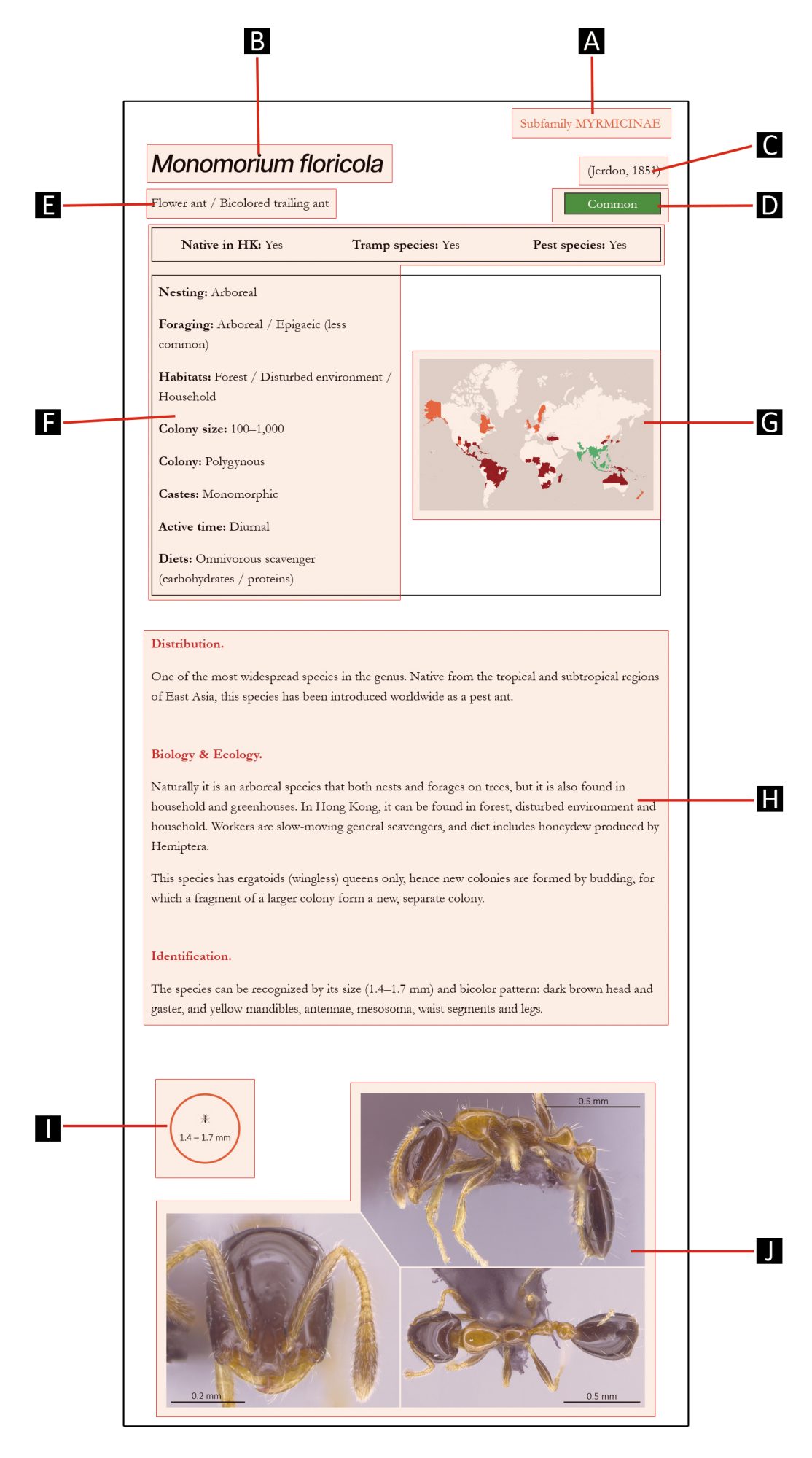
Subfamily FORMICINAE
Camponotus sp. cf. mitis
(Smith, 1858)
Common
Native in HK: Yes
Tramp species: Yes
Pest species: No
Distribution.
Native from the subtropical and temperate regions of East Asia, this species has a widespread distribution, and has one indoor introduction record in Netherlands.
Biology & Ecology.
The species is known to nest both on trees and inside decaying wood on the ground. It is native to Hong Kong and can be found in forest.
This species is polymorphic, meaning that its workers can be sorted into more than two subcastes: the larger major workers and the smaller minor workers, with intermediate subcastes in-between.
Identification.
The species can be recognized by its distinctly elongated head (longer than broad). Workers’ head and gaster are dark brown in color; mesosoma, petiole and legs have lighter coloration.




